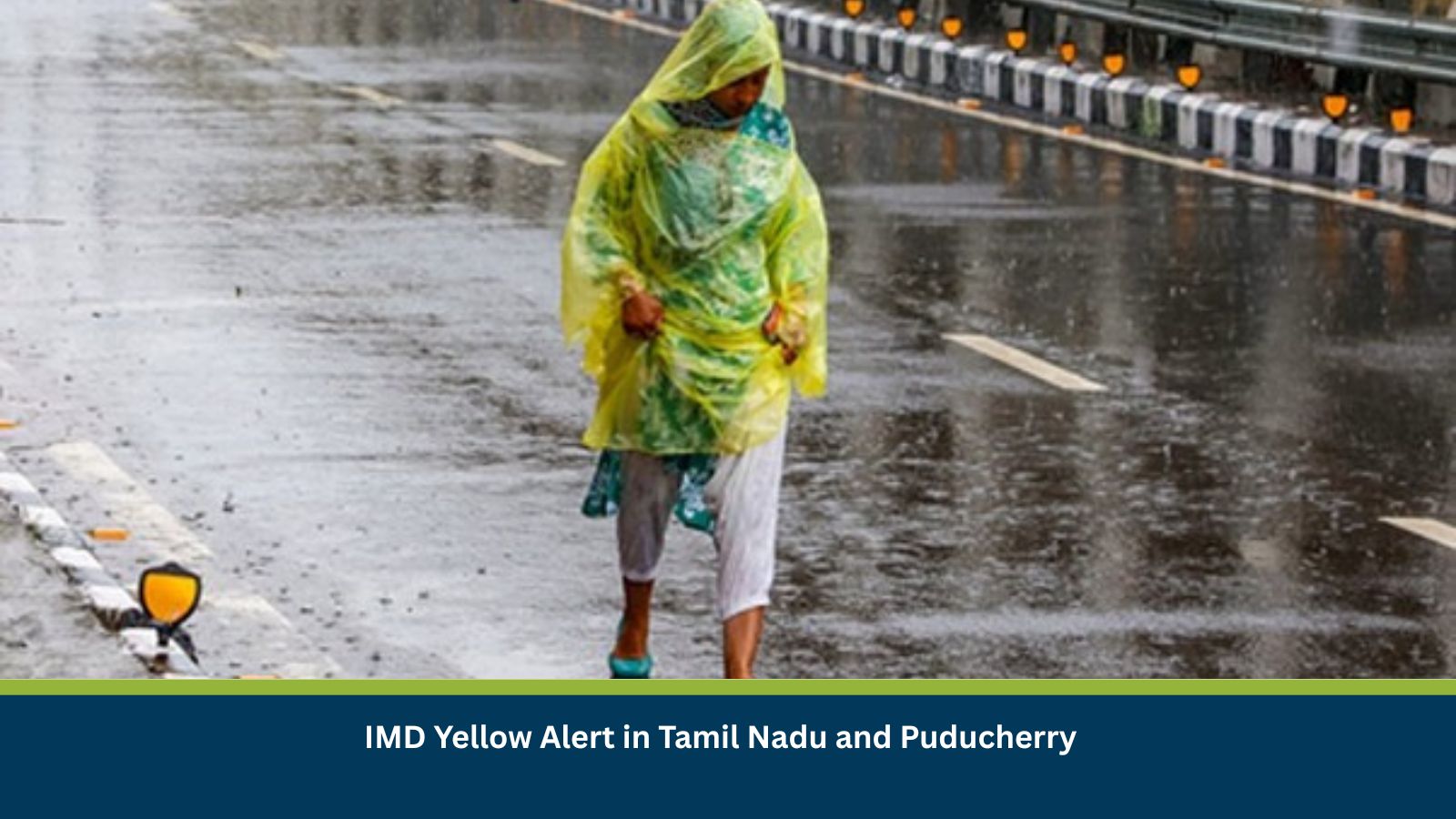What is Risk Analysis in the Context of Environmental Events
Environmental risk analysis assesses the likelihood and impact of natural or weather-induced events such as rainfall, storms, or flooding on safety, infrastructure, and business continuity. In this context, a yellow alert from IMD indicates potential moderate weather conditions requiring heightened awareness but not immediate emergency measures. Tamil Nadu and Puducherry are historically prone to heavy monsoon spells during October–December due to northeast monsoon activity. Past yellow alert periods have triggered local waterlogging, transport slowdowns, and isolated safety incidents, underscoring the need for proactive monitoring, resilient infrastructure, and contingency planning.
Executive Summary
- Date of Event: 12 November 2025
- Location: Tamil Nadu and Puducherry, India
- Risk Category: Environment
- Severity Score: 2 / 5
- Confidence Level: 88 %
On 12 November 2025, the IMD issued a yellow alert for several parts of Tamil Nadu and Puducherry, forecasting moderate to heavy rainfall accompanied by thunderstorms. The advisory highlights localized disruptions to mobility and public safety in low-lying and coastal districts. While the event is expected to remain moderate in severity, typical impacts include waterlogging, minor infrastructure strain, and short-term business interruptions. With no escalation to orange or red alerts, widespread damage is not anticipated. Confidence in this assessment remains high (88%), given IMD’s forecasting reliability and consistent regional weather patterns during this season.
Current Updates
As of 12 November, moderate rainfall has been reported across Chennai, Coimbatore, Cuddalore, and Puducherry, with intermittent thunderstorms. Local authorities have activated standard flood mitigation protocols, including stormwater drain clearance and pre-positioning of emergency response teams. Power utilities are monitoring grid stability to address any rain-induced short outages.
Known Hotspots and Sensitive Areas
- High Impact: Low-lying urban areas in Chennai (Adyar, Saidapet, Velachery), Cuddalore, and coastal Puducherry.
- Medium Impact: Interior districts such as Coimbatore, Salem, and Thanjavur facing local waterlogging and commute disruptions.
- Low Impact: Northern and western Tamil Nadu districts with lower rainfall intensity.
Recurring seasonal risk patterns indicate that Chennai’s arterial roads—Anna Salai, GST Road, and Velachery Main Road—are especially prone to water accumulation and slow traffic under similar weather alerts.
Impact on Infrastructure and Services
The yellow alert is likely to cause localized travel and mobility challenges, including temporary road inundation and traffic delays. Chennai’s MTC bus routes and suburban train lines may experience brief slowdowns, while Chennai International Airport (MAA) could face minor flight delays due to reduced visibility. Business operations may encounter attendance issues and reduced outdoor activity productivity. Utilities such as power and drainage systems may face minor service interruptions in rain-prone districts.
Recommended Actions
- Employee and Public Safety: Issue internal advisories on safe commuting, encourage flexible work-from-home arrangements, and maintain updated emergency contact lists.
- Facilities and Infrastructure: Secure low-lying facilities against water ingress, elevate critical assets, and ensure functional power backups.
- Logistics and Supply Chain: Pre-emptively reroute deliveries or warehousing away from flood-prone corridors; communicate potential delays to clients and partners.
- Operational Readiness: Activate Business Continuity Teams (BCT) to monitor IMD updates and coordinate real-time response with HR, Operations, and Security units.
- Public Communication: Disseminate clear messaging to employees, clients, and the public about precautionary measures and operational continuity.
Multidimensional Impact
The event’s impact remains largely localized, with no direct effects on unrelated political or social activities. Minor environmental consequences include waterlogging and increased urban runoff but no large-scale ecological or industrial disruption. Sustained rainfall beyond forecasted duration may, however, lead to minor escalation and isolated utility damage.
Emergency Contacts
- Tamil Nadu State Disaster Management Authority (TNSDMA): +91 94458 69843
- Puducherry Disaster Control Room: 1077
- IMD Regional Meteorological Centre, Chennai: mausam.imd.gov.in
- National Disaster Response Force (NDRF): 011-23438017
- TANGEDCO (Power Complaints): 94987 94987
Final Thoughts
The IMD yellow alert for Tamil Nadu and Puducherry represents a low-to-moderate environmental risk event requiring situational awareness rather than emergency response. Localized flooding and minor disruptions are probable but manageable with proactive preparedness. Businesses should sustain real-time weather monitoring, reinforce infrastructure resilience, and ensure continuity protocols remain active. Continuous situational intelligence through tools such as MitKat’s Datasurfr enhances readiness against evolving monsoon-related risks across southern India. Stay ahead of operational risks with real-time alerts, scenario modeling, and expert advisories with datasurfr’s Predict. Start your 14-day free trial of Datasurfr’s Risk Intelligence Platform today.






